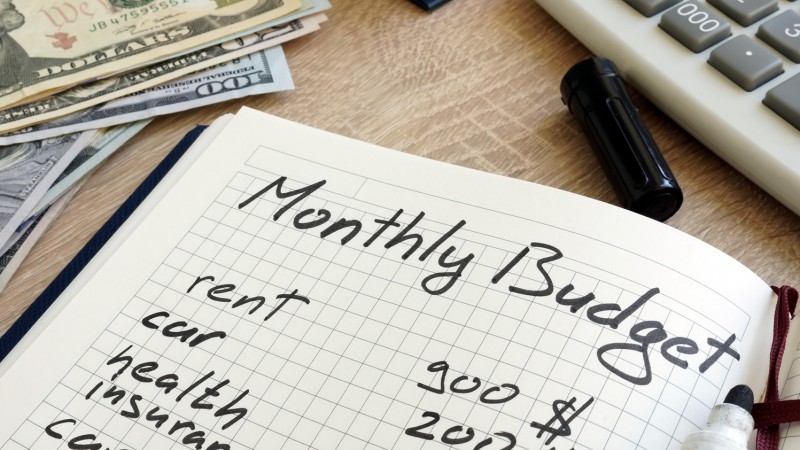How to Stop Living Paycheck to Paycheck
- Details
- Written by Remar Sutton
- Category: Articles

Are you or your family living right up to your income? Or perhaps you are going a bit beyond your income to make ends meet—running up credit card debt or dipping into savings. If so, you are not alone. Nearly half of U.S. households spend all of their income (or go beyond) according to a recent Bank of America report.
If you find yourself in this situation—or close to it—it's time to pause and look for new ways to cut spending and enhance saving.
If you find yourself in this situation—or close to it—it's time to pause and look for new ways to cut spending and enhance saving. Having even a small emergency fund can put you and your family on a more secure financial footing. Here are some tips to help. Some steps you can take today, others require a little more planning.
Quick First Steps for Saving
-
Pay Yourself First
Each pay period, arrange for an automatic transfer of a small amount, such as $25, from your checking account to your savings account. If your paycheck is direct deposited, your employer may be able to direct deposit a designated savings amount into your savings account. If you take savings out first, it is usually fairly easy to adjust other spending so that you barely miss this small amount. Yet saving $25 each pay period amounts to $300 in 6 months if you are paid bi-weekly. -
Pay for Small Purchases with Cash, Not a Debit or Credit Card
If you are under age 50, the chances are good that you pay even for small, casual purchases—those costing $5 or less—with plastic. It's easy and convenient, right? It's also easy to spend more than you realize on small purchases ranging from coffee or chewing gum to a lunch sandwich. If you regularly use plastic this way, take a look at last month's statements and total how much you spent casually for non-essentials. Set yourself a cash limit for each week's non-essentials. Put that cash amount in your wallet at the first of the week. When it's gone, no more non-essential purchases for the week. Put the amount of estimated savings in your saving account once a month (or increase your automatic transfer). -
If You Pay Cash, Save Your Change Daily
Although paying with plastic is increasingly popular, many people still use cash for most purchases. If that's your habit, pay with bills and save your change each evening. Deposit those savings every month or two in your savings account. (If you cook a special treat for the kids, maybe they will roll the coins for you!)
Savings Steps That Take a Little More Planning or Effort
-
Save More on the Cost of Utilities
Ways to trim down the cost of electricity, gas, and water each month, range from simple steps that cost nothing to home renovations or repairs that require some up front investment to save later.- Turn the lights off when you leave the room—even if all your fixtures and bulbs are energy efficient.
- Eliminate phantom energy loss. Many electronics including TVs, computers, game devices and the like continue to draw power even when switched "off." That cost mounts up. Save by plugging all electronics into power strips that you can cut off when the devices are not in use.
- Set heating and cooling appliances to use less energy when you are out of the house. Programmable thermostats make the job a snap and are fairly easy to install yourself.
- Run the dishwasher and clothes washer and dryer only when you have a full load.
- When you buy new appliances, select the most energy efficient ones that meet your needs.
- Don't leave the water running when you brush your teeth or wash dishes. Take shorter showers.
- Have an energy audit. Many power companies do this for free. They can also usually help you see what the estimated return might be on various energy-saving repairs or renovations.
-
Make Meals at Home
An analysis from the U.S. Department of Agriculture indicates that we Americans in 2013 spent 49.6% of our foods dollars on food eaten or prepared away from home. That figure includes both the meals we eat out in restaurants or prepared meals and foods we pick up from restaurants, markets, and other stores. Making meals at home can save big bucks. Ways to ease the time required include planning meals ahead, shopping only once weekly always using a list, preparing foods ahead on weekends and some evenings, and involving the whole family. Involving the whole family in these tasks may be the most important key to spreading the load and thus to success. Success also means continuing to enjoy some meals out and some take-out. -
Comparison Shop
Like most consumers, I'm sure you comparison shop when you're in the grocery store or when you're shopping for a new refrigerator or new vehicle. But you can also comparison shop for other services such as your TV package (cable or satellite), mobile phone service, and auto insurance. By taking time to get quotes from providers other than the ones you currently use, you may be able to negotiate a better deal from your current providers because they don't want to lose you as a customer. -
Make a Budget and Stick to It
This is probably the hardest step but also the most effective for helping you cut costs and save more. The goal is to find out where and how you are spending money and where you can spend less. Check out these tools for creating a workable budget.
The Benefits of Saving More Matter
Often when we think about saving, we think about giving up something. But actually, making a budget or a spending plan that helps you live within your income and save some money for future needs helps you gain more. You increase your ability to meet emergencies and to plan for purchases and activities you really want. You also gain peace of mind.
For More Information
- The Precarious State of Family Balance Sheets, a report from the Pew Charitable Trusts.
- Budgeting Tools from the Institute for Financial Literacy
- www.americasaves.org has lots of tips and information to help increase savings in many areas.

































